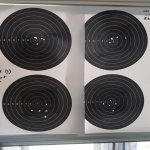I get what you're saying about match chambers and ammo lending to consistency.
As for SK, I seem to have had good results with it, not sure what else to say on that subject. I'm not an expert in this field by any stretch.
Are there nicer, more refined, more accurate rifles out there? Absolutely, otherwise people wouldn't pay that premium.
I do think a MKII is better than some give credit for, but I'm not sure why I get so defensive about it lol.
However, my intent was not to start an argument with you, and I did not want to muddy your discussion thread so if you prefer I will refrain from doing so again.
I've enjoyed participating in the challenge and discussion, and I'd like to continue to do so.
As for SK, I seem to have had good results with it, not sure what else to say on that subject. I'm not an expert in this field by any stretch.
Are there nicer, more refined, more accurate rifles out there? Absolutely, otherwise people wouldn't pay that premium.
I do think a MKII is better than some give credit for, but I'm not sure why I get so defensive about it lol.
However, my intent was not to start an argument with you, and I did not want to muddy your discussion thread so if you prefer I will refrain from doing so again.
I've enjoyed participating in the challenge and discussion, and I'd like to continue to do so.








































































